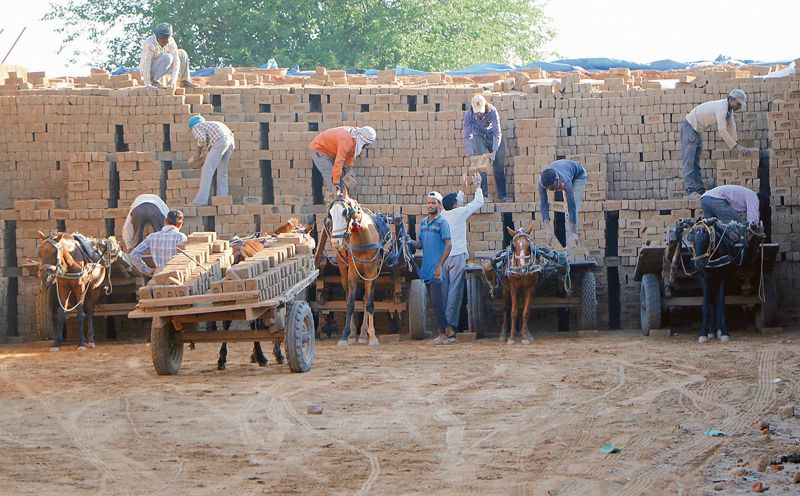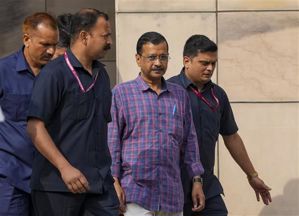
OMITTED: The informal sector and the bottom of the pyramid have been left out of the government’s calculations. PTI
Sushma Ramachandran
Senior Financial Journalist
A BUDGET that places its bets squarely on pushing public investment in infrastructure to promote growth, is the best description of this year’s annual government accounting exercise. It has little of the flourishes of past budgets, with the overarching highlight being a 35.4 per cent increase in capital expenditure that is expected to kickstart a virtuous cycle of investments in the pandemic-affected economy. In the process, however, it has left out several segments that needed more nuanced policies and special support.
The Budget has disappointed many who were expecting a pre-poll bonanza with freebies for various segments.
The single-minded approach of the Budget proposals comes in response to clamour over the past few months over the need to raise government expenditure in a bid to revive the economy and promote job growth. Capital expenditure is being raised from Rs 5.54 lakh crore to Rs 7.5 lakh crore in 2022-23, bringing it to 2.9 per cent of GDP. The fiscal deficit has been kept at 6.4 per cent as against 6.9 per cent in the current fiscal. An ambitious long-term estimate of 60 lakh jobs has been pegged for the next five years. Again, the focus on employment in the longer term comes even as there has been widespread criticism of the government’s failure to resolve the job crisis.
But there is much less in the Budget for the near term and for segments that have suffered the most pain in the pandemic. While the dramatic increase in infrastructure investments must be welcomed, enough attention has not been paid to the battered micro and medium small enterprises segment. A rise of Rs 50,000 crore in the emergency credit line guarantee scheme (ECLGS) for MSMEs in the hospitality sector is definitely a positive. But this is not enough for a segment that has not been part of the recent vibrant recovery of the formal economy.
Besides, one of the weaknesses in the single-minded approach is the spectre of inflationary pressures due to such a large infusion of investment into the economy. The second is failure to take into account external factors, such as the soaring oil prices and their impact on the current account deficit. It was expected that some form of direct benefit transfer would be given to those at the bottom of the pyramid, both in urban and rural areas, especially in view of the upcoming Assembly elections. This hope has been belied even as it cannot be denied that immediate relief is needed for the poorest of the poor. Existing welfare schemes, such as free food and the PM Kisan Yojana are laudable but Finance Minister Nirmala Sitharaman should have recognised that more needs to be done for the informal sector.
Interestingly, the rural job schemes have been scaled down in 2022-23. The outlay for MGNREGA has been reduced from Rs 98,000 crore to Rs 73,000 crore. This could be in anticipation of migrant workers coming back to cities and reducing the pressure on job schemes. But for the time being, the spurt in demand for jobs under these schemes during the pandemic does not appear to have abated.
On the plus side, the proposals have given a much-needed impetus to digitising the economy. The big news is the launch of the digital rupee as well as implicit recognition of crypto-currency by taxing all transactions involving virtual digital assets. The 30 per cent taxation is in the fitness of things, given that crypto trade is largely speculative in nature. And the 1 per cent tax deduction at source ensures that such transactions will now come into the formal financial sector which was the need of the hour. Crypto-currencies have not been banned as these are now undeniably part of the global financial ecosystem.
Other initiatives likely to prove helpful at the ground level include the launch of digital banking along with promotion of payment platforms. It has been seen that greater digitisation has proved supportive to vulnerable sections intimidated by the physical infrastructure of the banking network.
As for public sector disinvestment, it now seems to have been downgraded despite having been listed as a key area for resource mobilisation in previous budgets. The outlay for the next fiscal has been kept at a modest Rs 65,000 crore compared to Rs 1.75 lakh crore in 2021-22. This is a bid to dampen expectations given that over the past few years, achievement of disinvestment targets has been rather dismal. Last year, however, an entire pipeline of public sector companies meant for privatisation was unveiled, including two banks. Air India sale was the first major outcome but there is recognition that the pace has been slow.
There is also no mention of the asset monetisation pipeline that was outlined in great detail last year. This was also expected to be a major focus for resource mobilisation but is also taking more time than originally expected to get off the ground.
The salaried middle class will naturally be disappointed by the proposals as the usual speculation around income tax concessions swirled around this time as well. The only sop provided is a procedural improvement in terms of allowing revised income tax returns within a two year period of the assessment year. This can be described as yet another oversight as the beleaguered middle class too deserves some concessions.
This year’s Budget has actually disappointed many who were expecting a pre-election bonanza with many freebies for many segments of the public. Instead, the Modi government has presented a clinically correct Budget that keeps its eye firmly on public investment as the vehicle to pump- prime the pandemic-affected economy. Many economists are describing it as progressive and forward-looking as it will ensure infrastructure development and thereby expand the much-needed jobs in the economy. The problem is, it seems to look only at revival in the medium and long term while neglecting near-term weaknesses in many areas. It is also positive for the formal sector, hence the bullishness in reaction of stock markets. But the informal sector and the bottom of the pyramid have been left out of the Budget’s calculations this time around.
Join Whatsapp Channel of The Tribune for latest updates.




























